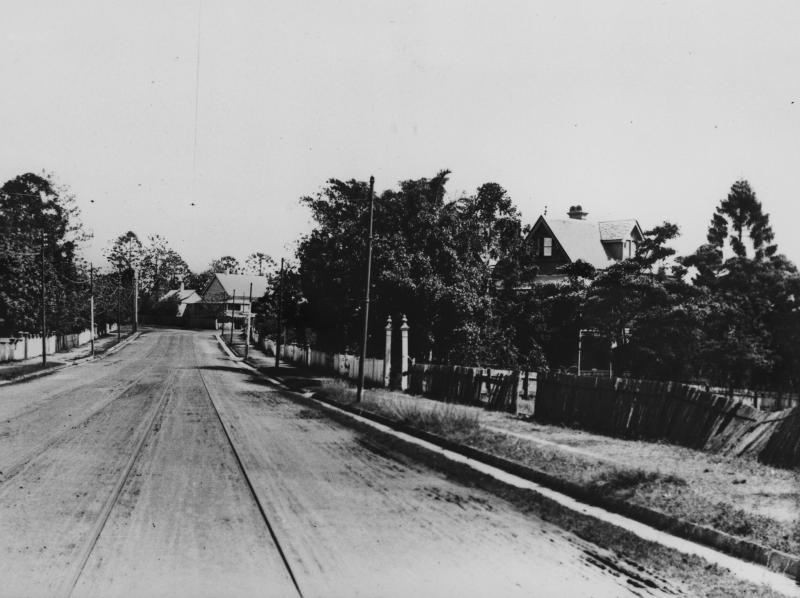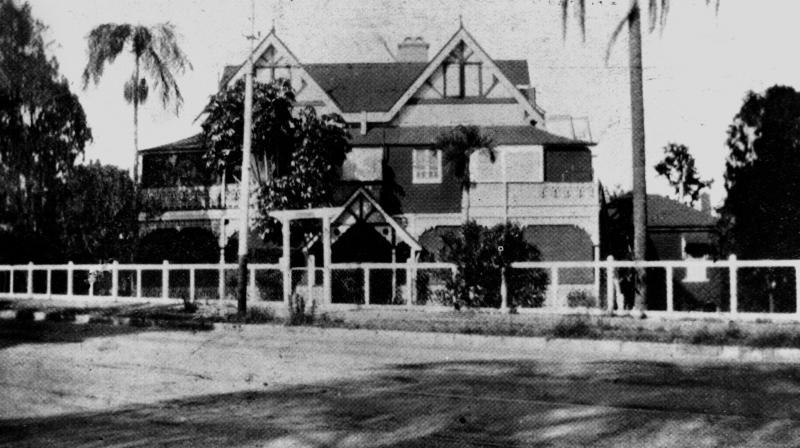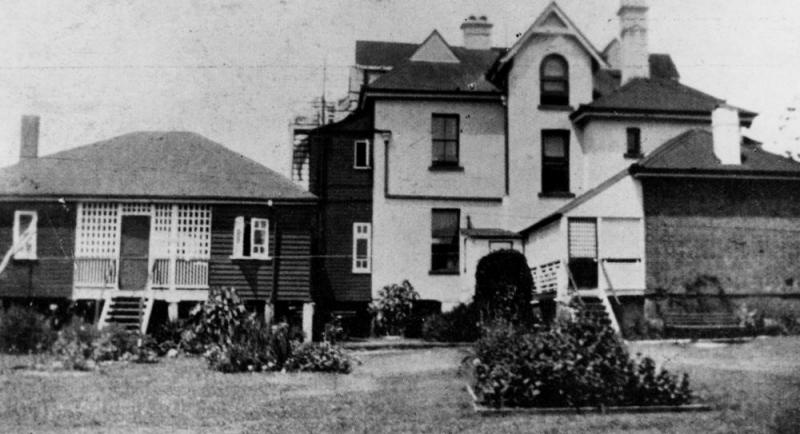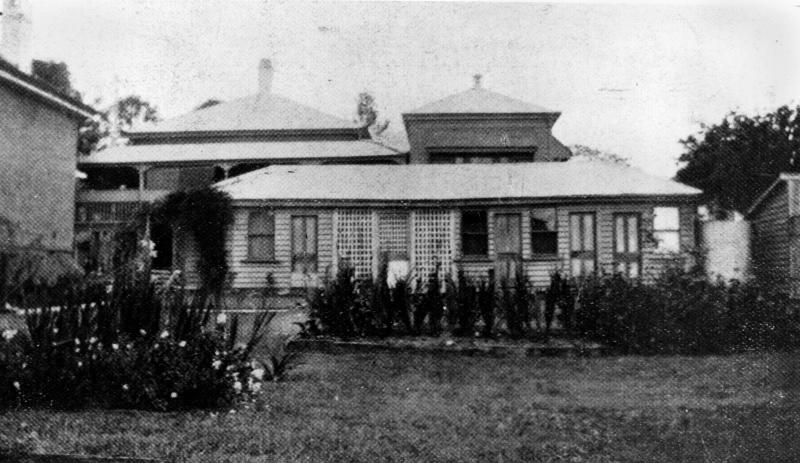Addresses
Type of place
House
Period
Victorian 1860-1890
Style
Filigree
Addresses
Type of place
House
Period
Victorian 1860-1890
Style
Filigree
This elite Victorian Filigree style residence was constructed in 1886 for politician and businessman Theodore Unmack and his family. The home was designed by architects Banks and Carandini and is believed to be the last surviving example of their domestic architecture. Moana was a private residence until around 1923 when it was converted into flats but was converted back into a private residence along with artist’s studio and private gallery in 1986. This attractive and unusual house makes a significant aesthetic contribution to the streetscape and provides historical evidence of the development of New Farm as an elite suburb from as early as the nineteenth century.
Also known as
Moana Flats
Lot plan
L2_RP54179
Key dates
Local Heritage Place Since —
Date of Citation —
Construction
Roof: Corrugated iron;Walls: Masonry
People/associations
Banks and Carandini (Architect);Theodore Unmack (Occupant)
Criterion for listing
(A) Historical; (B) Rarity; (E) Aesthetic; (H) Historical associationInteractive mapping
Also known as
Moana Flats
Lot plan
L2_RP54179
Key dates
Local Heritage Place Since —
Date of Citation —
Construction
Roof: Corrugated iron;Walls: Masonry
People/associations
Banks and Carandini (Architect);Theodore Unmack (Occupant)
Criterion for listing
(A) Historical; (B) Rarity; (E) Aesthetic; (H) Historical associationInteractive mapping
History
By the 1890s, New Farm had developed into a fashionable Brisbane suburb due to its closeness to the major shopping precincts at Fortitude Valley and the City. The land along Bowen Terrace and Moray Street was particularly sought after as it provided views of the busy traffic passing along the Brisbane River and across the river to Kangaroo Point. As a result, the elite of Brisbane society such as the premier and attorney general Sir Samuel Griffith began constructing their residences along these streets.
In 1885, businessman Theodore Unmack began the construction of a family residence on the land at 88 Moray Street. Unmack was a German migrant who had arrived in Brisbane in the 1860s. He developed a successful wholesale merchant business and he became a director of the Royal Bank of Queensland and a president of the Brisbane Chamber of Commerce. He also took on the responsibility of being the Queensland consul for the German Empire.
The house was completed by 1886 and Unmack named his home Moana after a prominent hotel in Honolulu, Hawaii where his family had stayed while on holidays. Alfred Banks and Victor Carandini designed the residence. They were architects for the Queensland Building Land Society and they became partners in 1885. They worked on the designs of stables, fences, villas and three houses until their partnership dissolved in June 1887. Moana is possibly the only surviving example of their work. They designed an unusual three storey brick residence that featured a large kitchen wing, a detached maid’s quarters and a coach-house.
Unmack was elected to the Queensland Legislative Assembly as the member for Toowong on 19 May 1888. The proximity of Unmack’s home to Griffith’s residence may be an indication that the two men were friends, for two years after entering parliament, Griffith made Unmack his Secretary of Railways and Post Master General. Unmack held these posts until the month before he retired, on 29 April 1893.
Moana remained the Unmack family residence until Theodore’s death on 17 December 1919. Soon after, a Miss M. Campbell purchased the property. With the New Farm tramline running past the door of Moana and because of its size, the property was ideal for conversion into flats. Miss Campbell had completed the conversion by 1922 and her Moana Flats began to take in tenants in that year. By 1925, another shed, possibly for use as a tenants’ garage, was added to the site.
Miss Campbell ran the flats through the 1930s-40s but by 1951 the property had changed hands. Subsequent owners such as T.M. May, M.A. Atkinson and U. Balanzino continued to operate Moana as flats through to the 1960s. During this time, the only major changes made to Moana were an addition to the flats in 1949 and the erection of a laundry in 1963. By the late 1990s, Moana had returned to its original usage as a family residence and it also housed a private art gallery. In 1998, Moana featured prominently in an exhibition entitled “Watercolours of New Farm” by Brisbane artist Gladys Blundell.
Statement of significance
Relevant assessment criteria
This is a place of local heritage significance and meets one or more of the local heritage criteria under the Heritage planning scheme policy of the Brisbane City Plan 2014. It is significant because:
Supporting images

Unknown photographer,
'Moray Street in New Farm, Brisbane, ca. 1900',
John Oxley Library, State Library of Queensland
'Moana' is visible at right, in the foreground, of the image.

The Queenslander (Brisbane, Qld. : 1866-1939),
‘Moana, a New Farm residence, 1932', 15 December 1932,
John Oxley Library, State Library of Queensland

The Queenslander (Brisbane, Qld. : 1866 - 1939),
'Rear view of Moana, a New Farm residence, 1932',
John Oxley Library, State Library of Queensland

Unidentified photographer,
'Maids' quarters at Moana, New Farm, 1932', 15 December 1932,
John Oxley Library, State Library of Queensland
The rear garden at Moana, a New Farm residence, showing the old wooden building that was originally used as maids' quarters. (Description supplied with photograph)
References
-
Brisbane City Council, Properties on the Web, website
-
Brisbane City Council, 1946 aerial photographs.
-
Brisbane City Council’s Central Library, local history sheets
-
Brisbane City Council, Sewerage Map, 31 January 1925
-
Department of Natural Resources, Queensland Certificates of title and other records.
-
New Farm and Districts Historical Society, A Companion to the Watercolours of New Farm – an exhibition by Gladys Blundell, (Brisbane: New Farm and Districts Historical Society, 1998)
-
Queensland Post Office Directories, 1868-1949
-
Schiavo, John, New Farm: A Study of Land Use and Settlement to 1999. (Brisbane: Schiavo, 1999)
-
Watson, Donald & Judith McKay 1994, Queensland Architects of the 19th Century, University of Queensland Press, St. Lucia
Citation prepared by — Brisbane City Council (page revised June 2022)